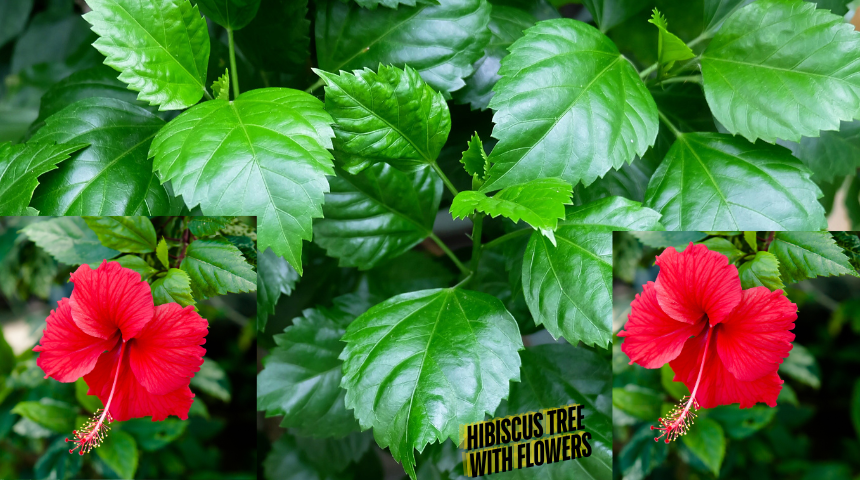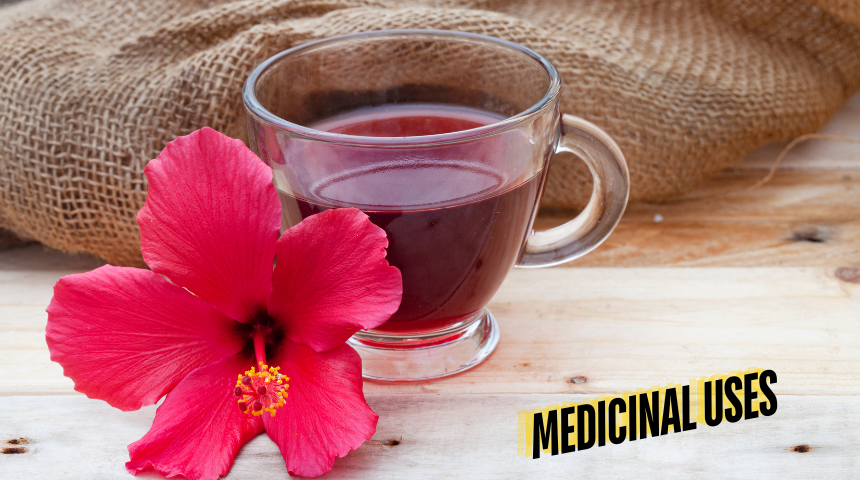Have you ever wondered does Hibiscus flowers close at night? As a passionate plant enthusiast, I delved into this intriguing question.
Join me on this botanical exploration to uncover the fascinating behavior of these vibrant blooms after the sun bids farewell.
Let’s unravel the mysteries of the Hibiscus flower and discover the secrets behind its nocturnal habits. Get ready for a journey into the enchanting world of flora!
Does Hibiscus Flowers Close at Night?
Hibiscus flowers do, in fact, close at night. I have firsthand knowledge of this intriguing occurrence. These colorful blossoms exhibit a nightly ritual as they delicately close their petals as daylight fades.
Hibiscus is a flower that only opens during the day and closes at night. It primarily blooms over all four seasons. It’s a normal reaction that indicates a brief rest and is a component of the circadian rhythm of the plant.
The already exquisite attraction of the Hibiscus flower is enhanced by its intriguing behavior, which lends a hint of mystery.

Provided Here Are Some Concepts About”Does Hibiscus Flowers Close at Night?”
1. Observation is Key
Spend time closely observing your Hibiscus flowers throughout the day. Take note of any changes in petal position, color, or overall appearance. This hands-on approach allows you to establish a baseline understanding of your flowers’ behavior
2. Track Daily Patterns
Keep a dedicated journal to record the opening and closing times of your Hibiscus flowers. Pay attention to consistency and any deviations in their daily patterns. This methodical tracking will provide valuable insights into their natural rhythm.
3. Weather Impact
Investigate how weather conditions influence the closing behavior. Note any patterns that emerge during sunny, cloudy, or rainy days. Understanding these nuances helps unravel the flower’s responsiveness to environmental changes.
4. Time-Lapse Photography
Set up a camera for time-lapse photography to capture the dynamic process of opening and closing. This visual documentation not only provides a unique perspective but also allows for a detailed review of the flowers’ movements over time.
5. Illuminate at Night
Experiment with soft artificial lighting during the night to observe its impact on the closing pattern. Some Hibiscus varieties may respond differently to nighttime illumination, offering a glimpse into the flower’s sensitivity to light.
6. Seasonal Variations
Explore whether there are noticeable changes in closing behavior during different seasons. Monitor how temperature fluctuations, daylight duration, and other seasonal factors may influence the timing and speed of the flower’s nightly closure.
7. Watering and Nourishment
Monitor how watering schedules and nutrient levels affect the closing patterns. Well-hydrated and nourished plants are likely to exhibit healthier and more predictable opening and closing behaviors.
8. Pollination Connection
Investigate the relationship between pollination and closing. Explore whether the flowers display heightened closing responses during the pollination stages. Understanding this connection sheds light on the plant’s reproductive strategies.
9. Protective Mechanism
Consider the idea that nighttime closing serves as a protective mechanism for the flowers. Explore how this behavior may shield delicate reproductive structures from nighttime threats such as moisture, pests, or cooler temperatures.
10. Share Your Insights
Engage with the gardening community, either online or locally, to share your observations and insights. Discussing your findings with fellow enthusiasts can lead to valuable discussions and collective knowledge about the fascinating behavior of Hibiscus flowers at night.

Hibiscus in Human Culture
Hibiscus in Human Culture: A Symbolic Tapestry
The Hibiscus flower, with its vibrant petals and captivating beauty, weaves a rich tapestry in human culture across the globe. From ancient traditions to modern symbolism, the Hibiscus holds diverse meanings and plays various roles.
Cultural Significance
In many cultures, the Hibiscus is revered for its symbolic significance. In Hawaii, it’s the state flower, embodying the spirit of the islands. In Hindu traditions, the flower is associated with the goddess Kali and represents feminine power and transformation.
Medicinal Uses
Beyond its aesthetic allure, the Hibiscus has found a place in traditional medicine. Various cultures utilize its petals and calyxes to brew teas known for their potential health benefits, from promoting heart health to aiding digestion.

Floral Language
The language of flowers, or floriography, assigns meanings to different blooms. The Hibiscus, with its diverse colors, conveys sentiments such as love, passion, and delicate beauty. The choice of color adds nuances to the message being expressed.
Art and Literature
The Hibiscus has inspired countless artists and writers. Its inclusion in paintings, poetry, and literature reflects its cultural impact. The flower often symbolizes fleeting beauty, the cycles of life, or the transient nature of emotions.
Culinary Delights
Beyond symbolism, Hibiscus features in culinary traditions. The calyxes are used to create beverages like hibiscus tea, a tart and refreshing drink enjoyed in various cultures. This culinary integration adds a flavorful dimension to the cultural significance of the flower.
Festivals and Ceremonies
Hibiscus flowers take center stage in numerous festivals and ceremonies. From adorning deities in religious rituals to being a part of festive decorations, the flower’s presence amplifies the cultural and spiritual ambiance.
Ornamental Beauty
Gardens and landscapes around the world boast Hibiscus varieties for their ornamental beauty. The flower’s presence in parks, gardens, and private spaces not only adds visual splendor but also connects individuals to the broader cultural tapestry.
Tattoo Symbolism
In the realm of body art, the Hibiscus finds its place in tattoos, often chosen for its symbolic meanings. Whether it represents personal transformation, love, or a connection to a specific culture, the Hibiscus inked on the skin becomes a unique expression.
Environmental Stewardship
The Hibiscus is not just a cultural symbol but also a reminder of environmental stewardship. Preserving the habitats of these flowers becomes an integral part of protecting cultural legacies and maintaining biodiversity.
How Does The Climate Affect Hibiscus Flower Closing Behavior?
The climate plays a crucial role in influencing the closing behavior of Hibiscus flowers.
1. Temperature
Warmer temperatures generally expedite the opening and closing process of Hibiscus flowers. High heat can prompt earlier closures, offering the blooms respite from the sun.
Conversely, cooler temperatures may delay the closing, allowing the flowers to linger open for a more extended period.
2. Humidity
Humidity levels contribute to the closing behavior. In humid conditions, Hibiscus flowers may close earlier in the evening as a protective measure against potential moisture-related issues.
Lower humidity might result in a more gradual and measured closing response.
3. Light
The availability of light is a critical factor influencing the closing pattern. As daylight diminishes, Hibiscus flowers naturally close.

Artificial lighting during the night may impact this behavior, potentially causing variations in the closing time. The sensitivity to light underscores the flower’s circadian rhythm.
4. Wind
Wind can significantly affect Hibiscus flower behavior. Strong winds may prompt earlier closures, serving as a protective mechanism against potential damage or stress.
In a sheltered environment with minimal wind, the flowers may exhibit a more gradual and standard closing response.
5. Soil Moisture
The moisture content in the soil also contributes to the closing behavior of Hibiscus flowers. Inadequate watering or excessively dry soil can lead to stress, prompting the flowers to close prematurely.
Conversely, well-hydrated plants are likely to maintain their vibrant blooms for an extended duration before the nighttime closure.
6. Time of Day
The time of day plays a crucial role in the natural circadian rhythm of Hibiscus flowers. As the day progresses and the sunlight wanes, the flowers initiate their closing process.
This intrinsic connection to the time of day highlights the flower’s adaptation to diurnal environmental changes.
7. Varietal Differences
Different Hibiscus varieties may exhibit unique responses to climate factors. Some varieties might be more resilient to fluctuations in temperature, humidity, or wind, while others could be more sensitive.
Exploring the specific characteristics of each variety helps in understanding and appreciating the diverse ways in which they interact with their surroundings.
8. Adaptation to Climate Zones
Hibiscus flowers showcase adaptability to various climate zones. Certain varieties thrive in tropical climates, where warm temperatures and high humidity prevail, while others flourish in temperate zones with distinct seasonal changes.
Understanding the natural habitat and preferred climate of a specific Hibiscus variety provides insights into its closing behavior.
FAQ
Do all Hibiscus flowers close at night?
Yes, most Hibiscus flowers tend to close at night, exhibiting a natural behavior influenced by environmental factors.
Why do Hibiscus flowers close in the night?
The closing of Hibiscus flowers at night is part of their circadian rhythm, often triggered by decreasing light levels and environmental conditions.
Are there specific environmental factors that influence the closing?
Yes, temperature, humidity, and the presence of light play crucial roles in influencing the closing behavior of Hibiscus flowers.
Will Hibiscus flowers close during the day if the conditions change?
While Hibiscus flowers primarily close at night, they may also respond to sudden changes in environmental conditions during the day, showcasing their adaptability.
Can I prevent my Hibiscus flowers from closing at night?
No, the nightly closing of Hibiscus flowers is a natural and healthy behavior. Attempts to prevent it may interfere with the plant’s natural rhythm and overall well-being.
Conclusion
As we bid adieu to our exploration into the captivating question, “Does Hibiscus Flowers Close At Night?” the garden of understanding has blossomed with vibrant insights.
From the gentle embrace of the evening breeze to the nuanced dance of temperature, humidity, light, and the whisper of the wind, the nightly closing of Hibiscus flowers reveals a symphony orchestrated by nature.
This floral performance extends beyond botanical mechanics; it’s a tale of adaptation, response, and the rhythmic heartbeat of the natural world. So, the next time you witness the petals gracefully folding as daylight wanes, embrace the beauty of this daily spectacle.
The Hibiscus doesn’t merely close; it pirouettes in harmony with the elements, leaving us with a garden of wonders to cherish. Happy gardening!



